Top Highlights from the ADA Scientific Sessions 2021
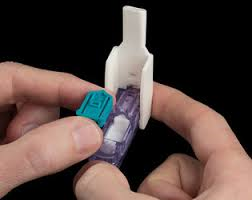 Inhaled insulin shows positive results in people with type 1 and type 2 diabetes, according to 2 small studies.
Inhaled insulin shows positive results in people with type 1 and type 2 diabetes, according to 2 small studies.
-
- The study, with 30 children ages 8-17, showed that
- serum insulin (the insulin found in the blood) reached its peak around 10 to 15 minutes after inhalation and returned to normal after about two hours. The peak decrease in post-meal glucose levels was observed 30 to 60 minutes after inhalation. This is similar to how Afrezza works in adults.
- The only side effect observed was a cough in the early stages of inhalation. There was no severe hypoglycemia observed.
- The study, with 30 children ages 8-17, showed that
-
- The second study with 20 adults with T2D
- Time in Range increased from 39% at baseline to 62% (that’s more than four additional hours spent in range each day!).
- Time above Range decreased from just over 60% (at baseline) to 31%.
- Time below Range increased slightly from 0.8% (at baseline) to 2.3%.
- The second study with 20 adults with T2D
Celebration of the life-changing century of insulin discovery, advances
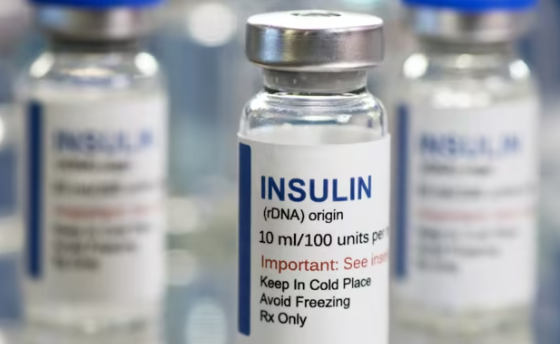 In the summer of 1921, Frederick G. Banting, MD, and his team at the University of Toronto isolated and identified insulin. The diabetes world has never been the same. Before insulin, type 1 diabetes was a death sentence, said Peter Arvan, MD, PhD, Division Chief of Metabolism, Endocrinology & Diabetes, University of Michigan.
In the summer of 1921, Frederick G. Banting, MD, and his team at the University of Toronto isolated and identified insulin. The diabetes world has never been the same. Before insulin, type 1 diabetes was a death sentence, said Peter Arvan, MD, PhD, Division Chief of Metabolism, Endocrinology & Diabetes, University of Michigan.
“My dad had type 1 diabetes, discovered right at the time insulin became available as a pharmaceutical. It saved his life,” Dr. Arvan said. “There have been extraordinary developments in diabetes over the last 100 years. With insulin pumps for continuous infusion and continuous glucose monitoring, you can achieve a normal lifespan, like a person who has normal pancreatic insulin secretion. So for type 1 diabetes, insulin has been transformative.”
Dr. Arvan will open a unique Scientific Sessions symposium, Insulin at Its 100th Birthday, by examining changing views of how insulin is made within the pancreas. C. Ronald Kahn, MD, Chief Academic Officer and Head of Integrative Physiology and Metabolism at the Joslin Diabetes Center and the Mary K. Iacocca Professor of Medicine, Harvard Medical School, will explore the evolving understanding of insulin action. And Michael A. Weiss, MD, PhD, MBA, Chair of Biochemistry & Molecular Biology, Indiana University School of Medicine, will discuss future therapeutic uses for insulin.
Watch video: 100th Anniversary of the Discovery of Insulin
OK, the next 2 items refer to HAPPINESS! It’s just got to be good, right?!
About Dr. Edward Diener, Psychologist Known as Dr. Happiness … his obituary was reported in The New York Times, 19 June 2021. He brought legitimacy and scientific rigor to the study of happiness. He was described as a playful social psychologist who was nicknamed Dr. Happiness for his pioneering research into what defined contentment.
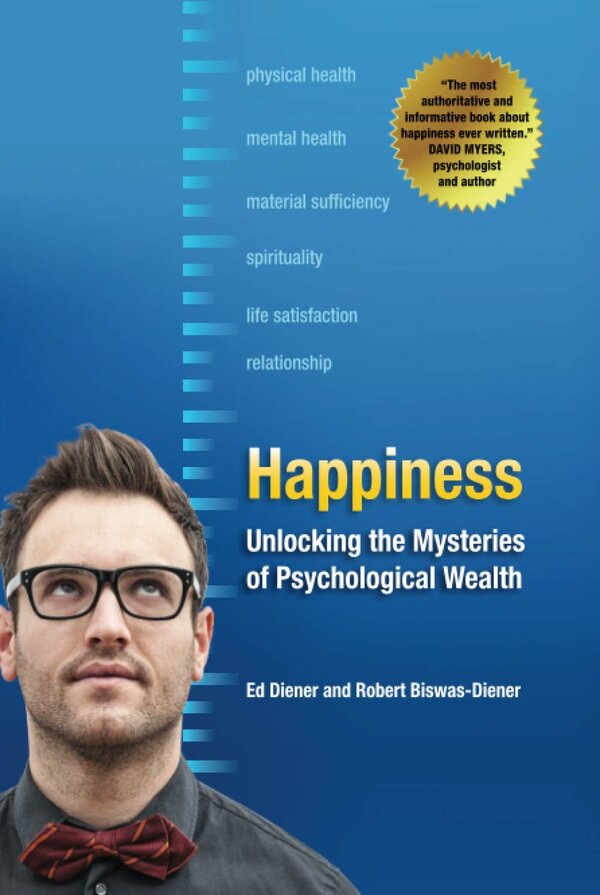 He began his research in the 1980s at the University of Illinois, Urbana-Champaign. Misery, sadness and fear had long been more fertile subjects of psychological study than happiness. Happiness “sounds flaky, kind of frivolous,” Dr. Diener said in 2017. “But what we’re talking about,” he continued, “is sustainable happiness — what you get from your family, work, meaning and purpose, having goals and values. Well-being is much, much more than having fun.”
He began his research in the 1980s at the University of Illinois, Urbana-Champaign. Misery, sadness and fear had long been more fertile subjects of psychological study than happiness. Happiness “sounds flaky, kind of frivolous,” Dr. Diener said in 2017. “But what we’re talking about,” he continued, “is sustainable happiness — what you get from your family, work, meaning and purpose, having goals and values. Well-being is much, much more than having fun.”
“I was from the misery/suffering cohort and was taken in by Freud and Schopenhauer saying the best you can do is not be miserable,” he said in a phone interview. “But Ed said, ‘No, there’s something above zero, there’s happiness, and you can measure it.’”
In about 400 articles written on his own or with others, Dr. Diener became the leading researcher in the science of measuring happiness — or, as he called it, “subjective well-being.”
He found that money can bring happiness, but only up to a certain income level; that genetics play a role in one’s satisfaction with one’s life; that having a few strong, intimate social relationships is critical to happiness; and that cultural norms influence what people believe happiness is and how to pursue it.
Dr. Diener was an extremely happy man. He was known for hosting parties that included activities like carving Spam into various shapes and walking on glass, and for hiding cash in the pages of books for his family to find. He once greeted his son’s wife’s sister in full pirate regalia, wearing a beard and using a hook for an arm that he bade her to shake. “Then he excused himself, came back as Ed Diener and never mentioned it again,” his son, who followed his father into happiness research, said in a phone interview. “He was cut from a different cloth.”
He and his son co-authored a book called Happiness: Unlocking the Mysteries of Psychological Wealth
Read more: Edward Diener, Psychologist Known as Dr. Happiness
The World’s (Almost) Happiest People Are Eating This For Lunch was reported by Sara Melissa Frost for Medium.com, 9 June 2021.
Why? Why eat this, every single day? The Norwegian tradition for this meal, called packed lunch goes way back. A slice or two of whole wheat bread, with cheese, jam, or liver paste topping it.
This lunch actually originates from a breakfast initiative named The Oslo Breakfast, which started in the early 1930s. At this time, Norway was not a wealthy country, and there was a lot of poverty in the country and its capital. The Oslo Breakfast was a program run by the government that provided a free meal to school children. Most of the time the ingredients included the following:
- Two slices of whole wheat bread spread with margarine
- A slice of cheese
- Half a pint of milk
- Half an apple and half an orange
Nothing more, nothing less. Same food, day in, day out. Kids were grateful for the meal provided to them. This plain and simplistic meal turned out to have some health benefits. The improvement of school children’s physical health was thoroughly documented during the time the breakfast was served. They performed better in school and were overall healthier and happier than before.
Over time, The Oslo Breakfast was introduced in several places outside Oslo, and it attracted attention outside the country’s borders. Only interrupted by the state of emergency during World War II, the breakfast program continued until the beginning of the 1960s. When the initiative was phased out, parents started packing the same food for their kids, and the kids would eat it for lunch at school. The meal was named matpakke.
This simple lunch is much healthier than ordering a pizza or fast food, and Norwegians, in general, are prioritizing a healthy lifestyle. Norway is the ninth healthiest nation in the world, according to Bloomberg’s 2019 Healthiest Country Index. The Nordic diet is known for promoting whole grains, fish, fruit, vegetables, and berries, and for avoiding all things sugary and processed.
Read more:
Four in 10 Diabetes Patients Have Kidney Disease was reported by HealthDay.com, 23 June 2021.
DISCLAIMER: This is just the sobering reality of Type 1 diabetes.
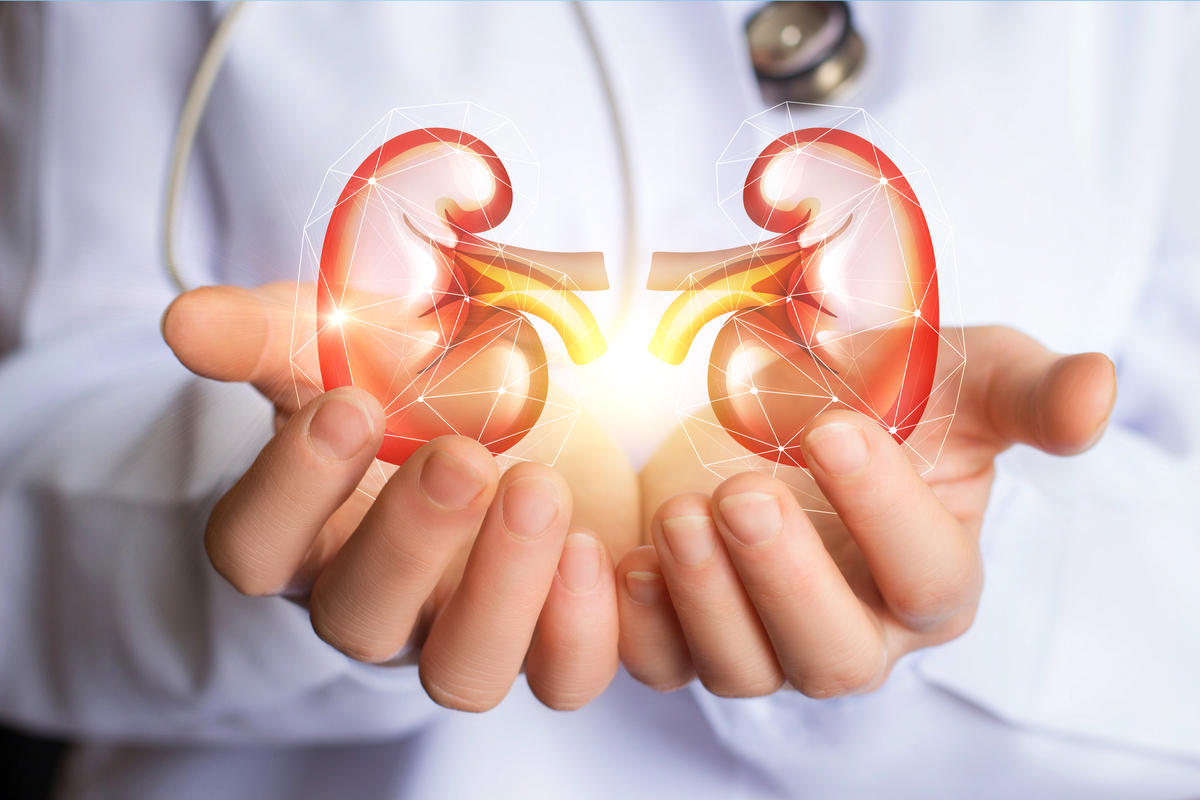 More than four in 10 patients with diabetes have diabetic kidney disease (DKD), according to a study published online June 14 in BMJ Open Diabetes Research & Care. Tomás P. Griffin, M.B., B.Ch., Ph.D., from Galway University Hospitals in Ireland, and colleagues assessed the prevalence of DKD and rapid renal function decline, as well as associated risk factors, among 4,606 adults attending a diabetes center in Northern Europe. “The relatively high prevalence of diabetic kidney disease and ‘rapid decliners’ in a well-managed cohort of adults with diabetes highlights the need for urgent public health intervention and for optimization of diabetic kidney disease prevention/treatment strategies,” the authors write.
More than four in 10 patients with diabetes have diabetic kidney disease (DKD), according to a study published online June 14 in BMJ Open Diabetes Research & Care. Tomás P. Griffin, M.B., B.Ch., Ph.D., from Galway University Hospitals in Ireland, and colleagues assessed the prevalence of DKD and rapid renal function decline, as well as associated risk factors, among 4,606 adults attending a diabetes center in Northern Europe. “The relatively high prevalence of diabetic kidney disease and ‘rapid decliners’ in a well-managed cohort of adults with diabetes highlights the need for urgent public health intervention and for optimization of diabetic kidney disease prevention/treatment strategies,” the authors write.
Read more: Burden of chronic kidney disease
High Intake of Chocolate in Morning Helps Reduce Blood Sugar and Weight was reported by Dr. Kartikeya Kohli for MedicalDialogues.in, 24 June 2021. I don’t know but this just doesn’t seem right … BUT I want to believe it!
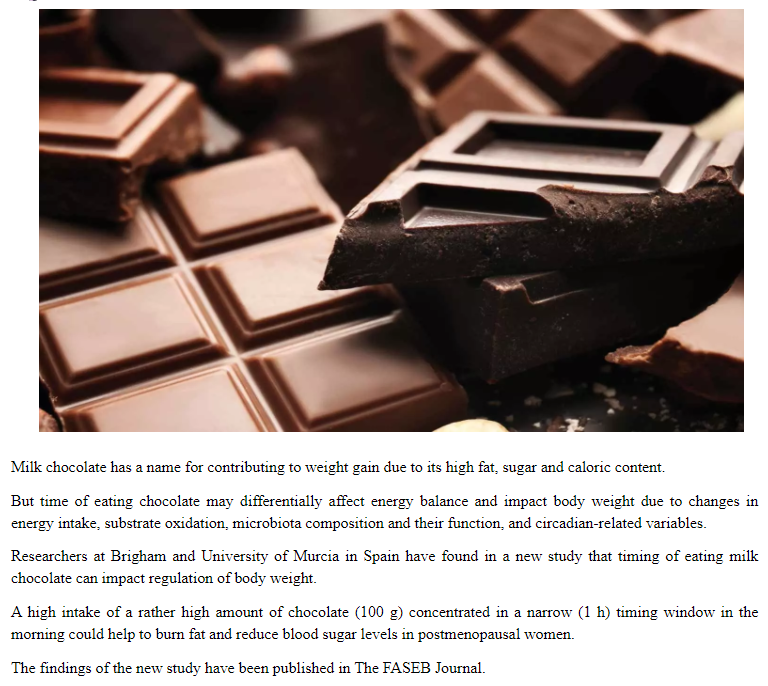
Reference: Timing of chocolate intake affects hunger, substrate oxidation, and microbiota:
Read more: High Intake of Chocolate in Morning Helps Reduce Blood Sugar and Weight


Sign me up on the chocolate deal. I will take mine as Hersey bars, maybe it will have peanuts. Then of course i will start inhaling insulin and only weigh 500 pounds this time next year.
PS: Someone was going to discover insulin. But No one had and who knows how long it might have taken. I believe Best should be added to the Nobel Prize, perhaps an footnote, but he deserves it.